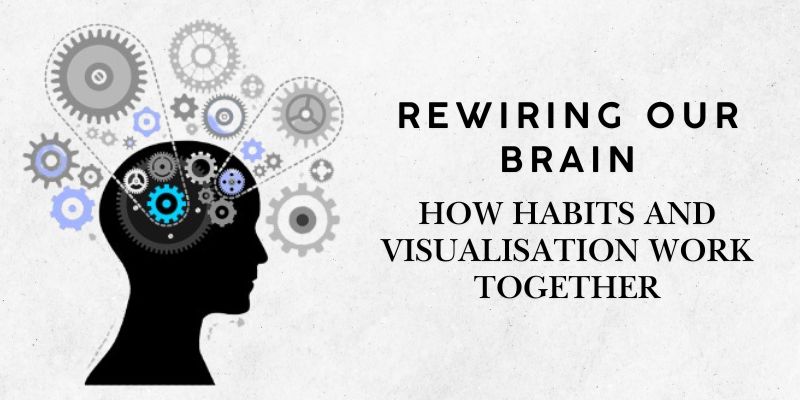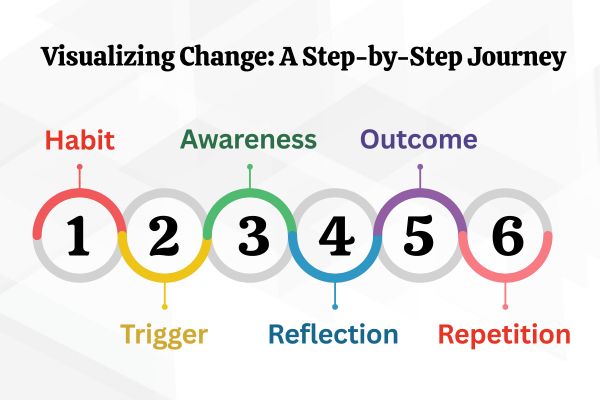Introduction
Hi there, I’m Reena Goenka—a therapist, a curious learner, and someone who is constantly amazed by the brain’s ability to change. If you’ve ever felt stuck in a habit, repeated a pattern you wish you could break, or thought ‘Why do I keep doing this even though I know better?’—you’re not alone. And today, I want to talk to you about why that happens and what we can do about it.
The answer lies in a powerful concept called neuroplasticity—the brain’s ability to rewire itself, form new connections, and learn new ways of thinking, feeling, and behaving. And one of the simplest, yet most powerful tools to work with neuroplasticity? Visualisation.
Why We Keep Doing What We Don’t Want to Do
Habits form when we get an immediate reward. The brain loves instant gratification. We go from trigger to behaviour to relief—and repeat it. Our brain strengthens these loops with repetition. That’s why we react automatically in many situations.
Neuroplasticity to the Rescue
Neuroplasticity is our brain’s ability to change. By practising a new response, we create new connections in the brain. The more we repeat it, the stronger it becomes. We can learn to respond differently, weaken the old patterns, and build healthier habits.
Why Visualisation Works So Well
The brain doesn’t always distinguish between real and vividly imagined experiences. When you visualise yourself reacting differently, your brain fires the same pathways as if you were doing it. Each time you rehearse, you strengthen the new behaviour.
Quote
“Visualisation is the brain’s native language—it doesn’t distinguish much between real and imagined experiences. When we visualise an action vividly, the brain activates the same neural circuits as if we were actually doing it.”
Reena’s Visualisation Exercise: Choices Have Consequences
- Think of a habit you’d like to change.
- Recall a recent time it happened – what triggered it?
- Notice thoughts and body sensations.
- Visualise the old reaction and its consequences. Say: ‘It’s not worth it.’
- Now visualise the new response and its positive outcome.
- Repeat the new movie a couple of times.
Why This Helps
You interrupt the old pattern and rehearse a new one. Each time you do this, you’re rewiring your brain. What we fire, we wire.
Final Words
Changing habits takes time. The old habit may have taken years to form. Be kind to yourself as you form the new one. Practice makes it easier. Visualisation is a simple but powerful way to train your brain to respond differently.











